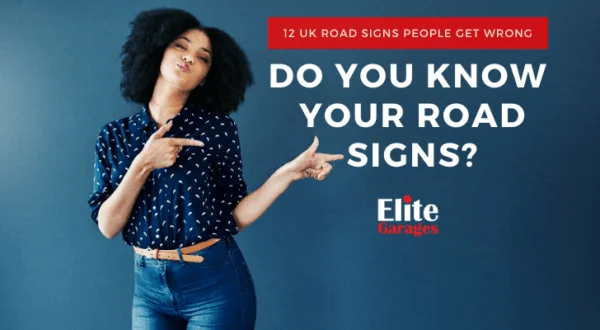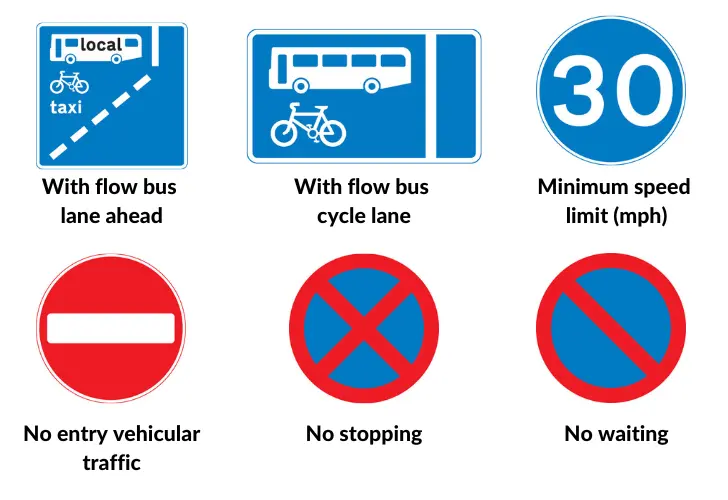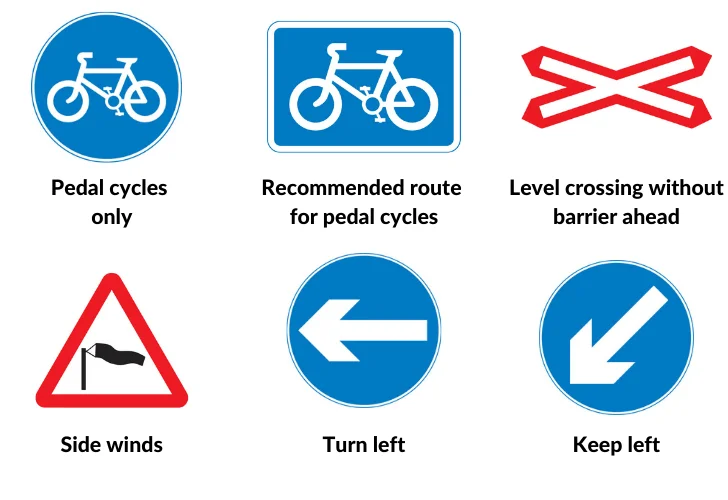
Understanding Road Signs Across The UK
Traffic and road signs are essential for safety as they direct, inform and control the behaviour of road users. These signs and signals communicate important information and directions, warn you of hazards and convey road rules. Interpreting these correctly will help you reach your destination safely and in time.
This means all new and experienced drivers should have a good knowledge of road signs but too many don’t. Which UK road signs do you think are the most misunderstood? In this article, we take a closer look at how the signing system works and which signs too many people across the country get wrong.
There are still many accidents and casualties in the UK. Whilst 2019 was slightly better than in 2018, the UK still had 153,315 road accident casualties. Although the causes vary, some could be attributed to people misunderstanding traffic and road signs.
What Are The Different Types Of Road Signs In The UK?
As you may have noticed on the roads, there are triangular signs, circular signs, rectangular signs and the hexagonal Stop sign. Each category has several colours which have different meanings which we’ve summarised below.
Triangular Signs
Triangular signs warn road users about potential hazards ahead and will always have red borders. It’s used to suggest potential danger and indicate anything from an upcoming junction to animals in the road. Triangle warning signs are often accompanied by a small white sign which offers additional information or explanatory text.
Circular Signs
Circular signs are either red or blue and are ‘regulatory road signs’ which communicate the rules of the road. They are mandatory and means you have to follow them no matter what. If you are caught disobeying these road signs, you could be faced with a hefty fine, points on your licence or a driving awareness course.
Red circles provide prohibitive instructions where the symbol represents something you are not allowed to do. These often have a red ring but some circles are also entirely red. Sometimes these signs will also have a diagonal red line striking through the symbol. Examples include ‘Maximum speed of 30 mph’, ‘No entry’ or the ‘No U-turns allowed’ signs.
Blue circular road signs typically give positive instructions which is the opposite of the red circle signs. Examples include minimum speed limit and to show drivers when there’s only one route they should follow.
Rectangular Signs
Blue rectangular road signs have white borders with two primary roles, depending on where you find them. On motorways, blue signs convey directions whilst on all other roads, they provide additional information.
Green rectangles are signs based on primary routes, such as A roads. At the same time, directions to a non-primary route will be highlighted in white.
White rectangular signs all have black borders and generally use black writing and symbols. Many show directions on non-primary or local routes, i.e. more minor roads. Certain white rectangles are used with other signs to provide more information, i.e. a warning or regulation beneath a triangular or circular sign
Brown rectangular signs are for tourist information where they direct road users to attractions. Yellow rectangular signs typically relate to traffic routes during roadworks whether give instructions about lane closures or emergency diversion routes.
How Well Do You Know UK Road Signs?
A survey conducted by private number plates provider, Click4reg, identified 12 commonly misunderstood UK road signs. They asked respondents to indicate what they thought would be the correct meaning of each sign. The results are in but, be warned, some of them might surprise or even shock you. For a full list of UK road signs, visit the Government website where it puts them into the following categories:
- Signs giving orders
- Warning signs
- Direction signs
- Information signs
- Road work signs
With Flow Bus Lane Road Signs
79% could not identify the sign ‘with-flow bus and cycle lane’. You should stay out of this lane unless you’re a bus or a pedal cycle. They might sometimes display the hours this sign applies but if not, assume its permanent and avoid it completely.
28% ‘correctly guessed ‘with-flow bus lane ahead which pedal cycles and taxis may also use’. It’s certainly a long explanation which is probably why so many got it wrong.
Minimum Speed Road Sign
In third place was the ‘minimum speed’ road sign which 70% could not identify. We are all aware that speed limits apply but not many know that there are minimum speed limits, in tunnels for example. Whilst there may not be a set minimum speed on the motorway if a police officer believes you are driving too slow and placing yourself and other road users at risk, they might prosecute you for careless driving.
Recommended: ‘Is Your Car Too Dangerous For The Road?’
No Entry, No Stopping and No Waiting
62% of people shockingly didn’t know what the ‘no entry’ road sign meant. A few more got the ‘no stopping’ and ‘no waiting’ signs right but 41% and 42% respectively were fooled once again. Below is a graphic representation of the above-mentioned road signs so many people could not identify correctly.
 Image source: Gov.uk
Image source: Gov.uk
Other Road Sign Survey Results
57% of respondents got the ‘Recommended route for pedal cycles’ wrong which is important whether you’re a cyclist or not. Also, only 54% knew what the ‘Route to be used by pedal cycles only’ sign meant which spells trouble if you’re a cyclist.
The ‘Turn left’ sign may seem obvious but 54% still answered it incorrectly. In terms of the ‘Keep left’ sign, results were slightly better (but not much) as 59% correctly identified this one. Considering the dangers of an ‘unmanned level crossing’, 43% answered this incorrectly. Remember, any unmanned crossing should be approached and crossed with extreme caution.
The most recognised sign was ‘side winds’ with 93% correctly identifying it. In second place was the ‘keep left’ sign which 75% of people got right. Here are the remaining six road signs from the survey which you should study carefully and remember for future reference.
 Image source: Gov.uk
Image source: Gov.uk
Why Choose Elite Garages?
Elite Garages is one of the country’s leading fast-fit retailers and forecourt operators in the country. As a member of Group Tyre, Elite represents more than 15% of the total tyres sold in the UK. We have over 1 million tyres in stock across the entire group offering excellent availability and variety.
With Elite, you can reserve your tyres online, book your MOT on our website and request Free vehicle safety checks. If you’re concerned about your car in any way, please don’t hesitate to contact your nearest Elite branch. We are here to help with all your tyre needs, MOTs, car services, wheel alignment, batteries, brakes and much more.
About Us
Opening Times
Saturday : 8:30–4:00
Sunday : closed
More Information
Contact UsCustomer Information Pack
Check MOT Due Date
Free MOT reminder
Careers
Legal Information
Recent Posts
- Car Battery Problems: Don’t Let a Dead Battery Flatten Your Day
- Bridgestone Tyres Promotion: Free Gift and Enter to Win £5,000
- Is Your Car Air Conditioning Ready for Autumn and Winter?
- Beyond Your Fareham MOT Centre: Tyres, Servicing, and Safety Checks
- Expensive Car Problems That Could Spell Trouble


